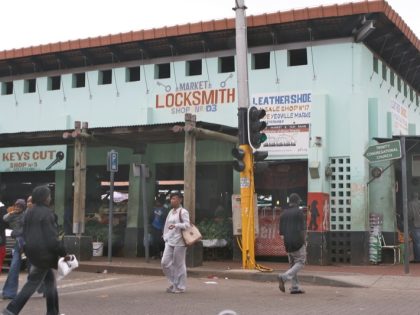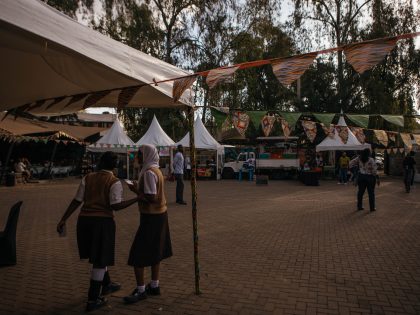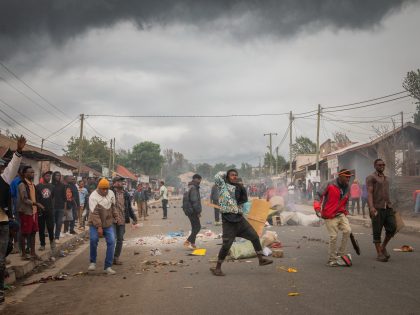Remembering Slavery in South Africa
People forget that for 176 years, racial slavery was the central institution in a large part of the territories that would come to form South Africa.

Trevor Samson via World Bank Flickr CC.
Speaking during a lecture she gave in Cape Town in July 2014, the anthropologist Deborah Thomas, who works in Jamaica, remarked: “I recognized Cape Town the first time I saw it.” She knew instantly that she was looking at a place shaped by slavery. What do you see when you recognize slavery?
At the time of writing this, in 2014, December 1st of this year marked 180 years since the abolition of slavery in South Africa. Few remember that apartheid was built on the systemic violence, displacement, racial formation and institutions of social control that marked slavery in the South African colonies from 1658 to 1834.
In fact, for 176 years, slavery was the central form of social and economic organization in the territories that would form South Africa. People were captured in Mozambique, Madagascar, India and South-East Asia to be brought as slaves to the Cape, the first and largest of the colonies that would form South Africa. Though the Dutch East India Company was forbidden from enslaving indigenous people at the Cape, the latter were subjected to genocide and conditions as brutal as slavery. Over the course of almost two centuries of slave-holding, enslaved people came to constitute the majority of the population of the Cape Colony, numbering more than 60,000 people (Ross, 1999, 6).
Slavery generated foundational notions of race and sex in South Africa, yet we have largely forgotten its role in our history. Our forgetting has now lasted longer than slavery itself.
When will we remember? And what does it mean to remember 176 years of pain and survival?
Forgetting is common even among those people who are descended from slaves, like me. As the writer and literary scholar, Zoë Wicomb, has argued, this is the effect of the deep psychic costs of almost two centuries of extreme violence and the further violence of being blamed for inviting that brutality. This has resulted in a phenomenon she unforgettably called a “folk amnesia” born of “shame” (1998, 100).
But it is also the consequence of a sustained system of propaganda that has diminished the meaning of slavery. Studies of South African history written before 1980 portrayed the role of slavery in the Cape as minor and its character “mild” (Keegan 1996, 16), a benign view also reflected in popular culture through texts such as cookbooks, cartoons and landscape paintings. It was only in the 1980s that significant new scholarship demonstrated that slavery shaped all aspects of life at the Cape and its hinterland (Worden, 1985), and slave labor was in fact central to the economy and the culture of the Colony.
The legacy of slavery still permeates South Africa today. Pumla Gqola’s superb and ground-breaking study What Is Slavery To Me? Postcolonial/Slave Memory in Post-apartheid South Africa (Wits, 2010) takes up the challenge of articulating the pertinence of this period for the present. My book, Regarding Muslims: from Slavery to Post-apartheid (Wits, 2014), examines the place of Muslims in the confluence of slavery and the making of race and sex in South Africa.
Once you look closely at the landscape of the country and listen to the people who live there, you see the inward and outward signs of slavery’s legacy everywhere – in ideas about race and sex, in language, and even in curses. Terms of abuse like “kaffir” (a racial epithet used to license violence against Black people during apartheid but that actually dates from the colonial period) and “poes” (Afrikaans for “vagina”) form an intimate catalog of memory of 176 years in which people were property and their lives were marked by brutality. Extreme violence, including systemic sexual violence, became the norm under slavery. Enslaved women were subjected to forced prostitution, and the Slave Lodge, which housed enslaved people owned by the Dutch East India Company, was also the “main brothel” of Cape Town. Today, the Slave Lodge is the national museum for memorializing slavery.
Seen in this light, the slave-holding period is the primal scene for understanding racial and sexual codes in South Africa, and our lack of attention to slavery prevents us from understanding a foundational time in our history. What do we miss by doing so? The historian Robert Ross writes that “throughout the 180 years of slavery at the Cape, not a single man, slave or free, was convicted for raping a slave woman.” The scale of such sexual violence is part of the reason that South Africa continues to experience epidemic levels of sexual violence today. Because of the high proportion of male slaves to male colonists, colonial society at the Cape had an intense fear of slave resistance and consequently, slaves were disciplined through “the massive use of judicial force,” to cite Robert Ross, and “violent and extreme” punishment (See Nigel Worden’s work). It is striking that a system characterized by such brutal control was portrayed as mild and picturesque.
The imprint of slavery is evident today in forms of labor that are crucial yet continue to be undervalued, underpaid and characterized by systemic violence, such as farm labor and domestic labor. After all, as a pattern of appropriation of people’s bodies and labor, control over their movement, and constraint over their access to economic independence, slavery was replaced by other forms of exclusion after emancipation.
Wicomb’s notion of shame shows how powerful emotion causes us to veer away from grappling with slavery’s impact. Yet artists have gone into the spaces fenced off by contempt and the propaganda of the picturesque to recover memories of slavery, for instance, in the visual art of Berni Searle, the novels The Slave Book by Rayda Jacobs and Unconfessed by Yvette Christiansë, and the play “Reclaiming the P…Word,” produced by students and faculty at the University of the Western Cape. The protagonist in Unconfessed, the novel about an enslaved Mozambican woman at the Cape, testifies that through slavery, Black women became “poese up to our chins” (2007, 320). In the present, the word “poes” is a ubiquitous swear word, “scrawled on toilet doors, station walls and schoolboys’ desks,” as a character in “Reclaiming the P…Word” asserts, marking the subsumed trace of the sexual violence of slavery that cannot be spoken of otherwise. To recall slavery beyond the veil of “shame” would allow us to understand the continuing prevalence of sexual violence against Black women, and the meaninglessness that is ascribed to Black suffering generally – the ground on which apartheid was built – as we contemplate the global resonance of the events in Ferguson, Missouri, and Staten Island, New York.
And yet of course to remember slavery is not only to remember the pain, but also enslaved people’s “modernity” (C. L. R. James, 1962) – their creation of new cultures, their evasion of official strictures and categories, their remaking of received practices, and their splicing of language, food, music and beliefs in ways that would eventually come to shape national culture as a whole. It is necessary to remember slavery to be able to attend to the forms of survival, inventiveness, and flourishing among the descendants of slavery. Yet it remains important to attend to the inter-generational effects of systemic violence and the interior and external signs of pain that it produces. As in other parts of the world, South Africa’s history of slavery continues to shape the present in profound ways.



















